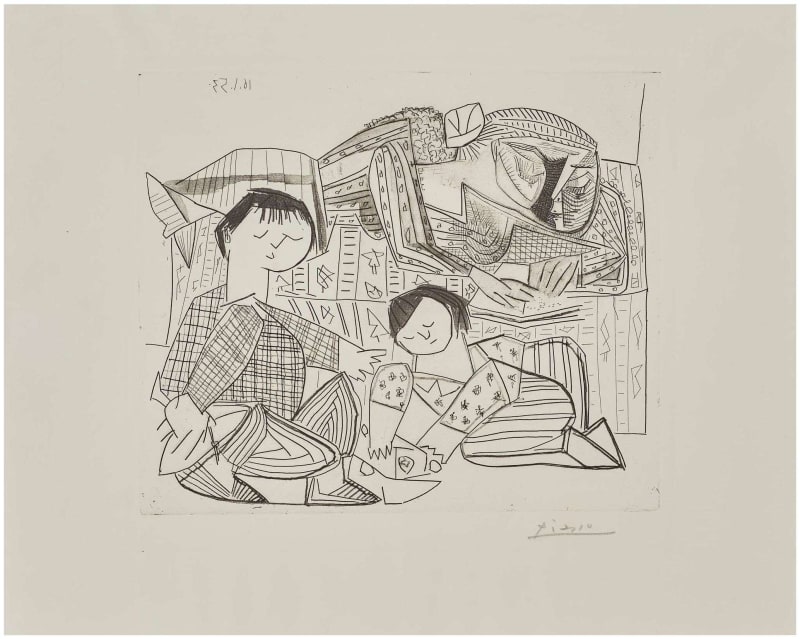“The world today doesn't make sense, so why should I paint pictures that do?”
Pablo Picasso was a Spanish artist widely regarded as one of the most influential figures in modern art and art history as we know it. Known for his ability to constantly reinvent his style, Picasso played a key role in shaping the 20th Century's artistic landscape. He co-founded Cubism with Georges Braque, creating iconic works like Les Demoiselles d'Avignon, 1907 and Guernica, 1937.
Picasso's career spanned many periods, from the somber Blue Period (1901–1904) to the light and playful Rose Period (1904–1906), to the art history defining Cubism. He later also experimented with Surrealism and Neoclassicism. Throughout his life, Picasso was continuously innovative, working across mediums like painting, sculpture, printmaking and ceramics.
Printmaking was a significant part of his career, and he created a vast and varied body of prints, including etchings, lithographs, linocuts and woodcuts. Printmaking allowed Picasso to experiment with new techniques and ideas, often in a more accessible and spontaneous way than with paintings or sculptures. He used printmaking as a means to push his creativity, exploring abstraction, symbolism, and form.
